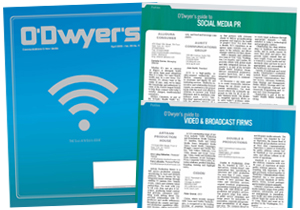 Social media can help shed light on issues that might have otherwise remained in the dark and bring grassroots issues to awareness on a national level. It can turn a group of friends into an army of social justice warriors and inspire average people and celebrities alike to pour big buckets of ice over their heads to raise millions for ALS.
Social media can help shed light on issues that might have otherwise remained in the dark and bring grassroots issues to awareness on a national level. It can turn a group of friends into an army of social justice warriors and inspire average people and celebrities alike to pour big buckets of ice over their heads to raise millions for ALS.
We can certainly aspire to the level of success that was achieved by the ALS Ice Bucket Challenge, but there’s a lot we can learn from it as well. Here are a few “do’s” and “don’ts” that might be helpful for your next cause marketing campaign.
Do define your objectives and priorities
Every social media campaign needs a clearly-defined objective and cause campaigns are no exception. Before you draft your first tweet, you should know exactly what you’re hoping to accomplish, whether it’s raising funds or awareness. This is the first step toward establishing whether or not your campaign will be a success.
|
|
When you’re working for a cause or a nonprofit, chances are there’s more than one thing you’d like to accomplish. Perhaps you’d like to generate awareness of a candidate AND mobilize people to vote, or maybe you’d like to raise money for your cause AND sign up as volunteers. In this case, prioritization is essential.
When in doubt, keep it simple. This is a good rule of thumb no matter what you’re doing on social media, but it’s particularly crucial for cause marketing. Social media is a powerful platform, but it’s also an incredibly noisy space. In order to break through the clutter, you need to ensure that your objective is as clear and streamlined as possible.
Do create the right call to action
The difference between activism and “slacktivism” lies in the call to action. Critics of using social media channels for a cause marketing campaign argue that consumers are only interested in changing their profile picture or using a hashtag for the attention it brings to their personal pages. But just because the consumer gets a piece of content out of the deal doesn’t mean your campaign is doomed to fail. In fact, it can serve as a great incentive to act. And if your goal is to raise awareness and half a million Facebook users change their profile pictures to support your cause, that’s absolutely progress toward your goal.
But if awareness is not your goal and what you’d really like is for people to vote, donate or sign a petition, a simple avatar change might not be the best way to get there. This was the pitfall of the Kony 2012 campaign. Users were on board with the message, but weren’t sure how to proceed after they changed their profile pictures. Having a clear call to action will help ensure that building momentum won’t result in your audience asking, “now what?”
Do offer a content “souvenir”
If the Obama campaign and the Ice Bucket Challenge have taught us anything, it’s that user-generated content plays an incredibly powerful role in a cause campaign on social media. It almost serves as a badge for the person to be able to say, “I care and I participated.” But as previously stated, it’s very important to note that although a wave of profile picture changes can be a powerful tool for raising awareness, it might not be the most effective method of driving other actions. If your goal is more along the lines of fundraising or drawing votes, consider positioning content as the product of the action rather than the action itself.
We’ve already seen many examples of how effective this approach can be. During the 2014 election, Facebook offered the option for users to add an event to their timeline if they participated in the election. The classic “I Voted!” stickers were enormously popular in the virtual space and provided users with a platform to speak about their views. And they certainly would’ve had to vote first, lest they miss out on the banter around whom to vote for. And of course, anyone who participated in the Ice Bucket Challenge would have gotten a video out of it.
Don’t wait to evaluate results
This is crucial for two reasons. First, monitoring your campaign on a rolling basis will help ensure better final results. Publishing content on social media isn’t like purchasing a TV or print ad. Of course you have the added advantage of two-way communication about your campaign, but you also have the unique ability to optimize in real time. Looking at your results on a regular basis can provide insights on how to pivot if your content isn’t resonating with your audience or how to tweak your spending if your ad units aren’t getting results.
Second, reporting your results can help you drum up more enthusiasm for your cause. ALS didn’t wait until the ice bucket challenge fizzled out to report how much money the participants raised. Instead, they were transparent through the whole process. This worked in their favor and every subsequent report spurred more donations and participation.
In truth, creating a social media campaign for a cause is not terribly different from creating a social media campaign for a brand, product or organization. In fact, most of the process is essentially the same. However, the fact remains that social media users interact with cause marketing campaigns in a very different way than most other content on the web. It’s our responsibility as strategists to know the difference between a campaign that will create waves and one that will create a superficial ripple.
* * *
Valerie Pritchard is a Digital/Social Strategist at Makovsky.



 What if companies could harness the fury of online outrage into a force for good? This is precisely where companies can start turning the trolls into brand champions.
What if companies could harness the fury of online outrage into a force for good? This is precisely where companies can start turning the trolls into brand champions. Audiences interacted with brand content far more often on Facebook and Instagram in 2023 than they did via X (formerly Twitter), according to a report that tracked engagement trends across different social networks.
Audiences interacted with brand content far more often on Facebook and Instagram in 2023 than they did via X (formerly Twitter), according to a report that tracked engagement trends across different social networks. Can public relations help counteract the dissension fostered by the power of digital platforms to spread hate, fear and confusion?
Can public relations help counteract the dissension fostered by the power of digital platforms to spread hate, fear and confusion? The number of Americans who get their news from TikTok has quadrupled in the last three years, according to a recent Pew Research Center report.
The number of Americans who get their news from TikTok has quadrupled in the last three years, according to a recent Pew Research Center report.


 Have a comment? Send it to
Have a comment? Send it to 
No comments have been submitted for this story yet.